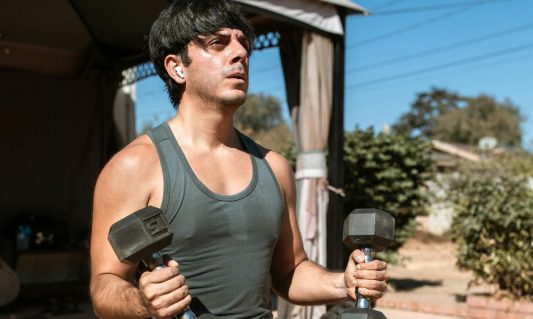Many gym buffs like full-body training because you can train multiple muscle groups in one session. Others prefer to split their workouts, doing an upper body session earlier in the week and a lower body session later. You can choose from different types of workout splits, and you might need to try it out to see if it works for you.
Researchers explored whether full-body training or workout splits are more effective for promoting fat loss. While both are excellent choices to help you boost muscle and strength, researchers dived further into the impact on fat loss.
The study

In a study published in the European Journal of Sport Science, researchers examined the effectiveness of two training methods: full-body training, which targets all major muscle groups in a single session, and workout splits, which focus on specific muscle groups. Which is better for fat loss?
The eight-week study involved 28 male weightlifters who completed five workouts every week. The lifters were assigned to one of two groups: the split-body workout group or the full-body workout group.
All participants completed 75 sets a week, with eight to 12 reps at around 70-80% of their one-rep max. The researchers instructed participants to continue eating their regular diet and they used a type of X-ray called DEXA scans to measure body composition, full-body fat, and regional body fat before the study and at the end. They also gave the participants a 24-gram protein shake to consume after each training session.
The results

Following the eight-week study, the researchers concluded the following:
- The full-body workout group experienced a significant reduction in both whole-body fat and regional fat, specifically in the upper and lower limbs and the abdominal area. The split-body workout group also experienced a noticeable drop in body fat, but to a lesser extent than the full-body group.
- The full-body workout group also reported less delayed onset muscle soreness (DOMS) compared to the split-body group, who reported more frequent DOMS, particularly in the lower body.
The takeaway

It’s important to keep in mind that this was a small study of only 28 male weightlifters. Physical activity and energy expenditure were also not assessed or taken into account, which is helpful when looking at delayed onset muscle soreness (DOMS). The researchers also reported that the warm-up sets weren’t the same for both groups, and the full-body group had a higher volume overall.
If you’re not sure which to go with, rest assured that both of these training methods are effective for losing body fat over time; you just have to decide what works best for you. If you prefer focusing on your upper body one day and your lower body during your next training session, that should still promote fat loss, and likewise if you prefer powering through a session that hits nearly all of your main muscle groups in one go, the full-body routine is the way to go.

